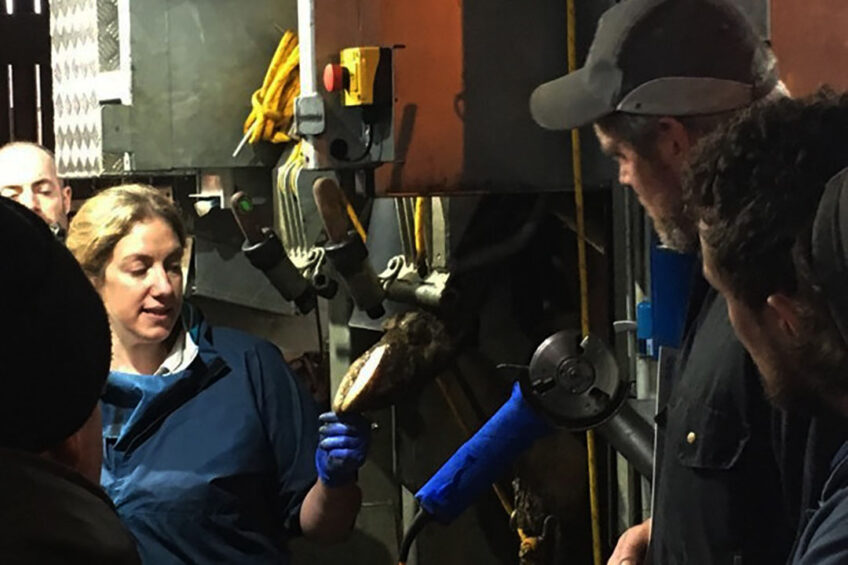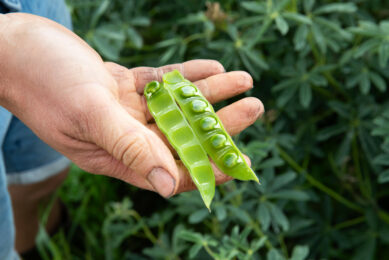Collaboration is key in tackling lameness

The saying goes ‘there’s no I in team’ and this is never truer than when it comes to tackling lameness. Lameness affects the whole supply chain; from the cow, to the farmer and their team trying to tackle the issue, to the milk processor trying to promote their brand. The key to improving hoof health is through engagement of all stakeholders from the cow up but also the processor down and ensuring that it is a collective effort.
Without doubt the biggest success I’ve had in tackling lameness is when there is involvement right across the whole farm team. This doesn’t just mean the farmer but the wider advisory team including the vet, nutritionist, consultant and foot trimmer.
Steps towards change
In the UK, it is predominantly the vet that takes the lead when it comes to animal health, but instigating change on-farm can be difficult, particularly if it adds time and effort into an already busy daily routine. Therefore, ensuring that all staff members are engaged and understand why changes are required is crucial. Staff training sessions can be time well spent and regular dissemination of results with a progress review is important for ongoing motivation. Ultimately improved hoof health benefits everyone.
Where there are a number of staff on the farm then allocating individuals to particular tasks can ensure a sense of ownership and make it more likely that these are carried out. An important part of any lameness reduction plan is the early identification of lame cows. It is therefore crucial that there is a system in place on every farm for easy reporting of new cases of lameness, and most importantly that these are followed up with inspection in the foot trimming crush. In the UK, fortnightly mobility scoring is recommended as best practice and should be carried out either by a member of staff trained in scoring or by an independently accredited scorer.
Analysing foot trimming records and identifying the most common lesion(s) causing lameness on the farm is essential to allow efforts and investment to be focused on the greatest risk factors.
Foot trimmer involvement key
One of the most important people in the hoof health team is the foot trimmer. They are the first to see when things may be improving or if problems are starting to flare, and the data they collect underpins any lameness reduction program. Analysing foot trimming records and identifying the most common lesion(s) causing lameness on the farm is essential to allow efforts and investment to be focused on the greatest risk factors. For example, if digital dermatitis (DD) is the most common lesion then reducing infection pressure and effective footbathing will be the most important areas to focus on. However, if sole ulcers are the most common issue, then transition cow management and cow comfort need to be targeted.
As preventative measures are put in place, ongoing communication with the foot trimmer is key to ensuring that changes are being seen at the ‘foot end’. A system needs to be in place whereby any changes in hoof health, particularly an increase in lesion prevalence, triggers a follow-on discussion with the farmer. The different communication networks, automation of records and ability to bring together different members of the team remotely have never made communication easier. It is essential to make sure that any lameness management program doesn’t just become about the quarterly or annual visits, but having a constant dynamic system in place to ensure success.
That is not to say that nutrition does not play a role in lameness. However, rather than being a direct cause, its effects are more indirect in nature.
Bringing the nutritionist on board
In some instances, the nutritionist is first in the firing line when lameness increases, particularly due to the historical emphasis placed on the role of acidosis in the development of sole ulcers. However, this has largely been disregarded due to a lack of scientific evidence and the inability to reproduce this scenario in an experimental situation.
That is not to say that nutrition does not play a role in lameness. However, rather than being a direct cause, its effects are more indirect in nature. For example, organic trace minerals and iodine have been shown to be important in improving skin quality in pre-calved heifers, reducing the incidence and severity of digital dermatitis. Another area where nutrition influences lameness is through maintenance of body condition score (BCS) through the transition period. BCS is linked the size of the digital cushion and thin cows (
Lameness is a multifactorial condition and there is no single solution for every farm. However, one thing that underpins success on every farm is a collaborative approach and involvement of the whole farm team. A greater level of ownership and motivation to drive lameness down all lead to greater success in the long-term and this benefits everyone from cow to consumer.
Join 13,000+ subscribers
Subscribe to our newsletter to stay updated about all the need-to-know content in the dairy sector, two times a week.










